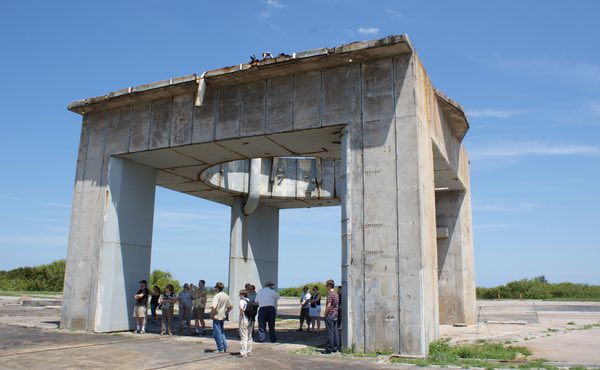Preserving our space heritageby Anthony French
|
| Many of the launch pads used in the pre-Apollo era, the building blocks for Neil Armstrong to take that one small step, lie rotting among the Florida foliage. |
Nearly 60 years have elapsed since Sputnik broke into the realm of “outer space” and in that period, there has been more than 5,000 rocket launches. Men have walked—and driven cars—on the Moon. Robotic missions have landed safely on Venus, Mars, and Saturn’s moon Titan. Probes have crossed the outer expanse of our solar system and begun indefinite voyages into the unknown. Not all have been successful, of course, but that’s still an awful lot of hardware roaming the heavens or sitting on other planets as space junk.
I do object to the term “space junk,” though. It carries the assumption that everything humanity leaves up there is intrinsically disposable and of no consequence, as if it should be disposed of with as much regard as you would an empty can of beer. Confusingly, the same attitude has lately been applied to relics of the space race here on Earth. NASA allowed contractors to alter the launch pad that launched Apollo 11 to the Moon in 1969. Similarly, many of the launch pads used in the pre-Apollo era of Gemini missions, the building blocks for Neil Armstrong to take that one small step, lie rotting among the Florida foliage. They are unkempt and uncared for, almost as if the plant life is working to uphold NASA’s 21st century agenda and hurrying to eradicate any trace of the past.
My prejudices against the modern space program can wait for another day. What sits awkwardly with me is that when ISIL destroys the ancient temples of Palmyra, they are marked with the mantle of cultural and historical vandals. When the US government destroys relics of the Moon program on the grounds the neglected metalwork was an environmental hazard (probably to do with the total lack of care for it since it was retired) it passes with but a whimper from a small band of hardcore space buffs. Where’s the difference? I don’t see it.
UNESCO lists such recent developments as the Sydney Opera House (built 1973) as World Heritage Sites. Why not the Kennedy Space Center? Why not a place from where six manned missions reached the Moon? Or Cape Canaveral Air Force Station, from where the Pioneer and Voyager missions that left the solar system lifted off? Are footsteps on the Moon a lesser achievement than the construction of an admittedly architecturally-striking, but relatively standard, concert venue? At least in Russia the authorities tout Soviet space achievements and the associated museum-housed hardware with the respect it deserves, if not the official recognition of its status.
| UNESCO lists such recent developments as the Sydney Opera House (built 1973) as World Heritage Sites. Why not the Kennedy Space Center? |
And then there are the off-world objects to consider. The Apollo landing sites on the Moon. Abandoned hardware drifting across the star system...lost forever? Museum ships float tied-up in port here on Earth; why not one day the International Space Station, parked in a secure and sustained parking orbit for our grandchildren to visit while on holiday on Earth from their Martian home so they can marvel (and maybe mock) our early efforts at living in space? UNESCO sites are “world” sites after all, so perhaps I can’t hold that one against them.
Agreements such as the Outer Space Treaty blur the way ahead on how we preserve internationally-agreed sites of human historic achievement. The first step might have to be a private effort to define these objects and sites, and then lobby for the status and protection they need to be preserved for future generations, just as we preserve historic sites across the globe today. There are inventories of space junk. There is no similar, universally-accepted list of what constitutes historic space hardware and sites. I think it’s time we had that list, before it’s too late.
